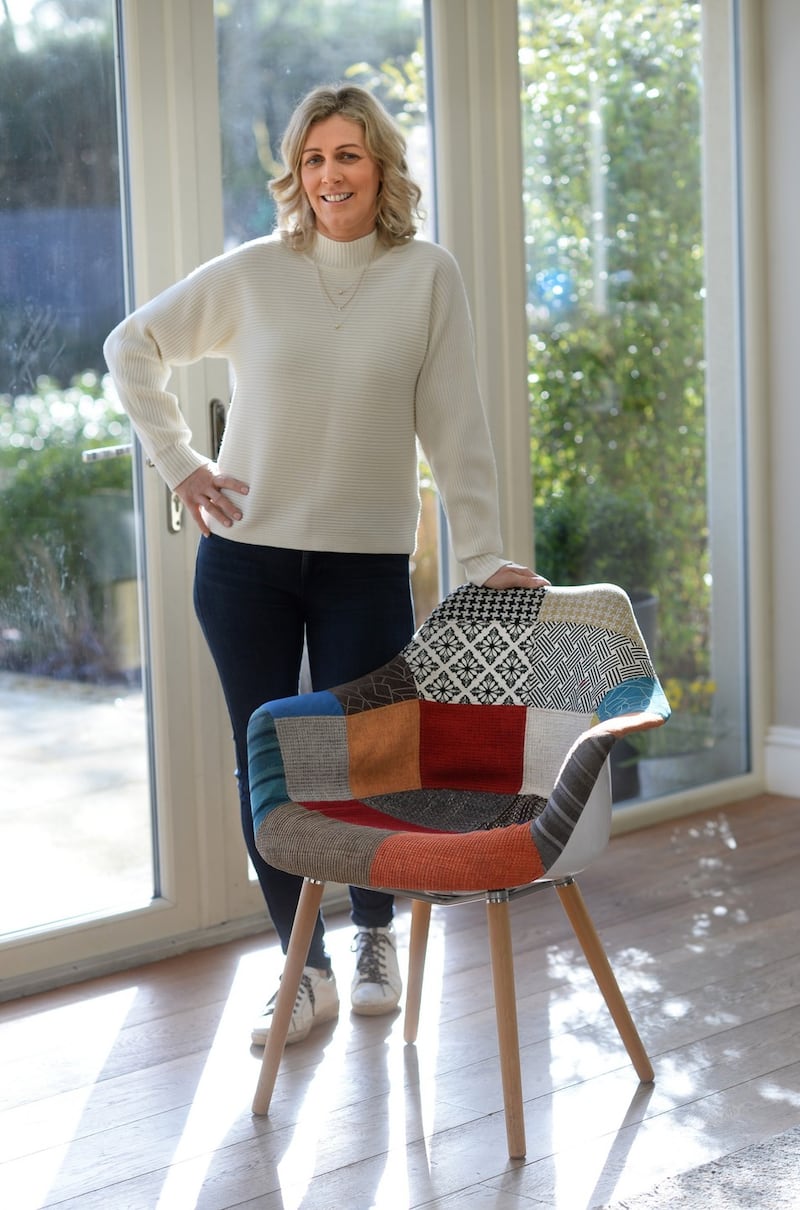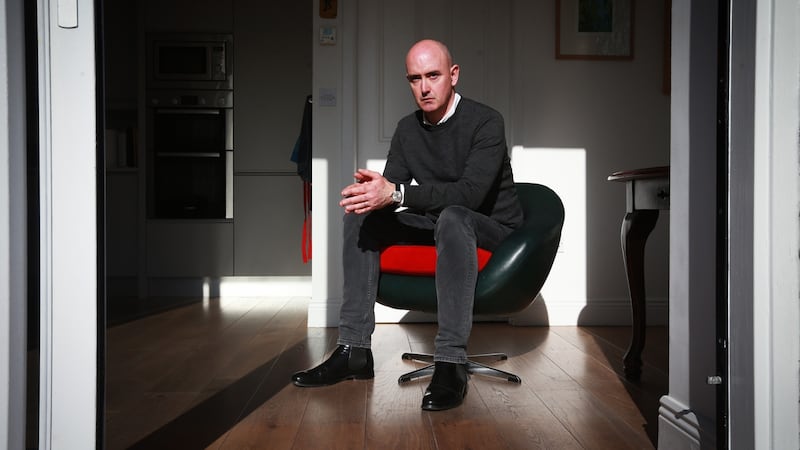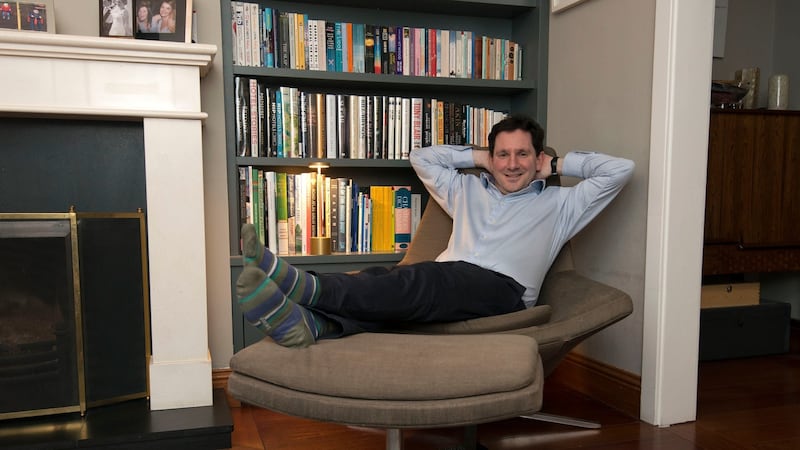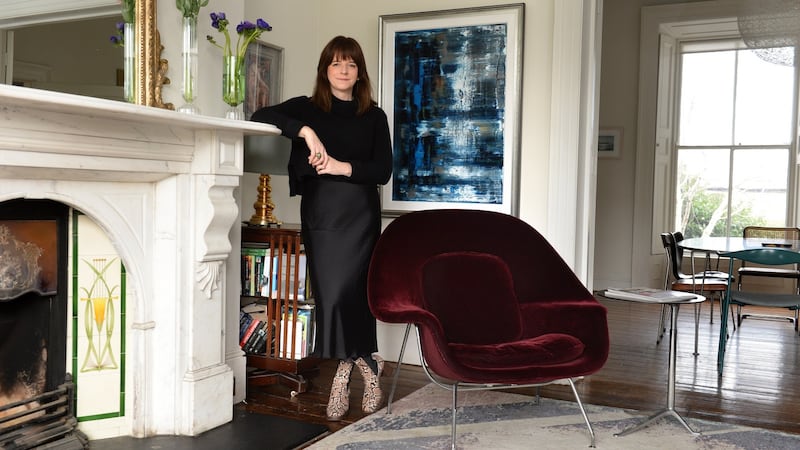A chair is more than a practical place to unburden yourself. Its style and form says as much about you as the colour you choose to paint your front door. Chairs are the shoes of the fashion world, a place to play with individuality no matter how small your space is or how size zero your budget may be.
Miriam Peters
Interior designer Miriam Peters of Minnie Peters Design House spends her free time travelling through Belgium, Holland and France on the hunt for antique finds to use in her projects, buying now for use later and housing the treasures in a warehouse until they are needed. She happens on many things that she buys for herself but that end up in a client's home.
This oversized, antique oak Dutch armchair is one of the few pieces that she has managed to keep. It has slender baluster legs to the front, a cross hatched base and has been gently restored and covered in a linen from C &C Milano.
“It one of my favourites as it still has that aged, worn look about it on the handles that shows it has a history. It really is a good example of what I love. I love to collect unusual items from the past and I tend to add them into the mix regardless of whether it is a contemporary, classic or casual space as they add an eclectic feel to a room.”
Chairs are great fillers for a room and can be very useful, she says. This one sits by the fireplace as a fireside or “chit chat” chair, as she puts it, in her open plan kitchen, living cum dining room. It does double duty as a dining chair, when she needs an extra seat as it’s the perfect height to sit at the table.
A chair can make a statement in a room and can be re-covered if you want to move it to a different part of the house. “Some of the unusual retro or antique seats are like pieces of art in a room that have been given a new lease of life.” More often than not she re-covers them with calico linen, a beautiful natural fabric that works on old and new pieces alike.
This one is a favourite of one of her rescue dogs, King Billy, who likes to classify it as his own throne, she says. She uses throws, antique fabrics from Morocco and French tapestries that can be hand washed, to protect the chair seat from dog hair but isn't too precious about it. She has two dogs of her own and fosters up to seven animals at a time. Currently she's got two brown terrier-mix pups under her roof and posts images to Instagram of them in various parts of her rather fine home.
Do the dogs help to sell her chairs? No, she says. "Rather the chairs help to rescue the dogs and find them a new home." minniepeters.com
Bryan O’Sullivan

London-based interior designer Bryan O'Sullivan's Fulbeck chair, pictured, was used in his refurbishment of the the Berkley Bar and Terrace in London, a project that helped earn him the title of Interior Designer of the Year from Elle Decor.
Inspired by 1950s Italian forms and Cuban cigar shops, the space is set up as three interconnecting rooms. The chair is one of a pair that flank a fireplace at the far end.
Part teddy bear, part traditional wingback, it’s a cosy yet contemporary shape that gives its occupant a degree of privacy.
The chair was designed in his studio, where he employs over 20 people, with Irish talent very well represented. But to turn the idea into reality he contracted Fulham-based custom furniture maker, Ben Whistler, to build the frame and to pad it out. Then he and the team spent time sitting on it and making minor adjustments, such as padding out the lumbar and seat and expanding the arm rests, to get it just so. Before it went into production the firm made three different prototypes, which are now housed in some of the hotel's bedrooms.
"The first was a baby bear version," he recalls. "It was too miniature and looked like it had shrunk in the wash. We wanted it to be a sizeable chair, the kind you can curl up in. All the parts you can touch are made of leather, so they can be wiped down. The back and side are upholstered in mohair velvet for a really subtle contrast. Its feet are walnut, made from a tree that was blown down in 2007 and has been used throughout the project." bos-studio.com
Patricia Power

Quantity surveyor Patricia Power's favourite seat riffs on Dax, a mid-century Eames design for Herman Miller, which she bought from Zinzan while pregnant with her youngest daughter.
“During each pregnancy I have transformed some part of the house and and while on maternity leave with my last baby I wanted a new table and chairs and wanted something bright and modern.”
The Organic chair has a Joseph and his Technicolour dream-coat like patchwork cover, one of four that she bought to contrast with a further four plain moulded seats that surround her custom-made table. Made of oiled teak, the 2.2m long by 1m wide style by Newbridge-based Vernon Walker was designed to fit into the open plan space of her Co Meath home, a dormer bungalow, extended from a cottage that is 100 years old.
“Everyone has a specific place at the table,” says the mother of four. “This happened organically rather than by design. My husband Barry is at one end, me at the other, with the four kids” – Alice (12), Aisling (11), Aoibheann (8) and Anna (5) – “all sitting on designated seats that they chose themselves.”
The plain ones the girls sit in are like school chairs, she says and easily cleaned. “One wipe down and they’re perfect again.”
At weekends she retires to the table and her chair armed with a cup of tea and the newspaper so that she can spread it out and read in peace, no matter what's going on around her. "It is a little bit of me-time," she says. patriciapowerqspm.com; zinzan.ie
Gregory Curran

Interior designer Gregory Curran grew up in Basel and was gifted the 1970s leather swivel chair, pictured, by his mother, who in turn had received it from an art-collecting friend of hers who had worked in a gallery in Milan and also at the Basel Art Fair. "She had a really good eye," he says.
“In Switzerland it was not uncommon to rent and as result people invested in furniture and art as a way of showing off their personality and individuality.”
It was there that he first came across the designs of Ray and Charles Eames. The dark, bottle green leather seat has travelled with Curran from Helvetica to London and on to Dublin.
As a student in a house share he used to "neatly place" his clothes on it, as opposed to the floordrobe system used by roommates. He had the chair in a home he had rented in Killester, Dublin but one of his tenants threw out the seat cushion so he had another one made in a red cool by The Sofa Factory, one of several Irish firms he's a fan of. Others include Simon O'Driscoll, Newry-based Orior and Cork-based Joseph Walsh.
He recently worked with architect Gráinne Webber on the refurbishment of Dunboyne Castle, supplying it with seating from Dunshaughlin-based John O'Connell Furniture and Paris-based Hamilton Conte, available through Sandyford-based Curated.
"Comfort is the most important thing to consider when buying a chair," he says. "Mine is a neat and a simple design with a simple square pod base. Its leather is in perfect condition."gcurrandesign.com
Adrian Hill

Architect Adrian Hill describes himself as the proud owner of two iconic 20th century designs. One is Hans Wegner’s Wishbone chair, a seat whose popularity is due to its perfect proportions, that has probably been in every magazine spread ever published.
“It is a well-balanced chair. If you made any part of it thicker or thinner than it is it would look wrong. The fact that it is so well proportioned, each bit works together.”
But the seat he really loves is the Metropolitan chair, first designed by Jeffrey Bernett in 2003 for B&B Italia. He loved its grid-like fabric and bought it, along with a load of other furniture for clients, years ago, from Gareth O'Hagan of O'Hagan Design.
Hill also visited the factory in Italy where much of the seat was made by hand. Its steel frame was filled with expanding foam, which solidifies so that it will never deform. The covers were hand-made and removable. You can wash them using a specialist cleaner or even send them back to the factory to have them cleaned or indeed replaced, all for a cost.
It makes a statement in the living room of his Blackrock home where his two children, Charles (6) and Eloise (5), love swinging around on it. "It is a really comfortable place to take a book down from the bookcase, which was built by Michael Farrell Joinery, and flick through one of the many picture books or read the paper." adrianhill.ie
Emily Maher

As owner of Lost Weekend, a beautiful interior design shop in Dún Laoghaire, Emily Maher has gathered a small collection of designer pieces. Many were gifts from her husband, Declan, including a Pretzel chair. But the seat she really coveted was a Womb chair, first designed by Eero Saarinen for Florence Knoll in 1948.
“She is said to have asked him to design a chair that is like a basket of pillows. It’s been on my radar forever but didn’t actually get to sit in one until about 15 years ago.
“It’s really difficult to find a nice lounge chair and it suits me as I like to curl up in a chair. Mine is the Relax version. It’s got a moulded fibreglass shell and feather cushions that can look a bit squashed sometimes but I like that. The classic has foam cushions.”
It has chrome legs and is upholstered in a burgundy mohair velvet that is coarser than cotton or silk but maintains its pile. “It was probably a bad idea as we have a Schnauzer that likes to use it as a scratching post.”
She says it’s a chair to relax in, depending on how you like to relax. Some people love a slouchy seat. For those she recommends Gervasoni’s Nuvola as it’s like sitting on a big cloud. If you like more lumbar support then Fritz Hansen’s Ro is the one. It has a high back, a firm yet comfortable seat and you can get a footstool to match.
The Womb chair can be ordered through the shop with prices starting from €3,960. Engaging her services early on, from the minute you employ an architect, is something more clients are doing, she says. This means they will have their furniture ready to move in the minute the builders move offsite.
Maher rents her Blackrock home and has chosen to always rent unfurnished homes. "We've built up a nice collection of our own furniture. It means that we always feel at home from the minute we move in." lostweekend.ie










